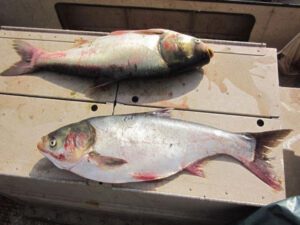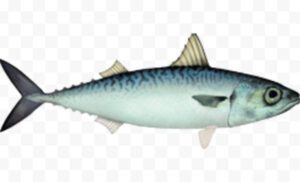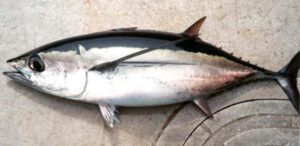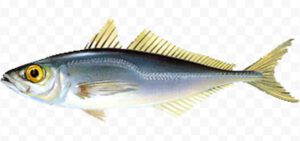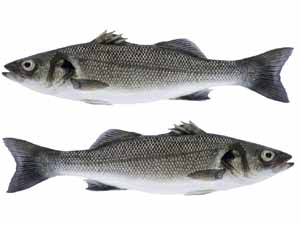The Hilsa fish (Ilish fish) is a very popular species of fish in the herring family which is very popular as food fish in the Indian subcontinent. It is also known by many other different names such as Ilish, Hilsha, Hilsa herring, Hilsa Shad, Ellis, Modar, Palva, Pallo Machhi, Sboor, Terubuk etc.
Hilsa is very popular in it’s native area and it is the national fish of Bangladesh, and the state fish of West Bengal. But the worlds famous Hilsa fish comes from Padma River, Bangladesh (Padma River is the main distributary of the Ganges).
Along with Bangladesh, Hilsa fish is also available in some other countries such as India, Myanmar, Pakistan, Iran, Iraq, Kuwait, Bahrain, Indonesia, Malaysia and Thailand. But Bangladesh is the top Hilsa producing country in the world followed by Myanmar and then India. As of 2021, about 86 percent of the world’s total Ilish fish supply originates in Bangladesh.
Currently the Hilsa fish is widespread, and is listed as Least Concern. But there have been serious declines in some major populations due to overfishing by commercial fisheries.
What is Hilsa fish?
Hilsa or Ilish is a very popular and highly prized fish. It belongs to the herring family and mainly found in the rivers and coastal waters of South Asia. It is especially found in Bangladesh and India. Hilsa is mainly popular for its rich, oily flesh and distinctive flavor. The scientific name of Hilsa fish is Tenualosa ilisha.
Hilsa fish names in other languages
As we have mentioned above, the Hilsa fish is also known by many other different names in many different languages and different parts around the world. Its name some other languages are:
- Bengali: Ilish (ইলিশ)
- Hindi: Ilish (इलिश) or Hilsa (हिल्सा)
- Urdu: Ilish (ایلش)
- Tamil: Virundhu meen (விருந்து மீன்)
- Telugu: Palla (పల్లి)
- Malayalam: Karammeen (കരമ്മീൻ)
- Punjabi: Ilish (ਇਲਿਸ਼)
- Marathi: Bangda (बांगड़ा)
- English: Hilsa or Ilish
What are the Differences Between Hilsa and Ilish Fish?
None, Both Hilsa and Ilish are correct names for the same fish. The name can vary depending on the region and language. In Bengali and some other Indian languages, it is commonly known as Ilish. While in English and other languages, it is often referred to as Hilsa. So, both names are correct, and they are used interchangeably to describe this popular fish.
Why is Hilsa Fish Very Popular?
The Hilsa fish is very popular in its native area mainly because it has a unique taste and it is considered a delicacy in many places. It is also rich in nutrients, like omega-3 fatty acids, which are good for human health. Most of the people like its flavor. And Hilsa is often used in traditional dishes that have been passed down for generations. Cultural symbol in some regions is also another reason for its popularity, and some people have a strong emotional connection to it.
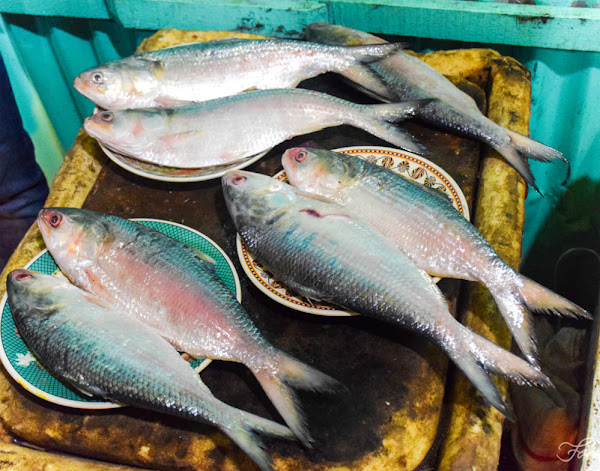
Characteristics
The Hilsa fish is easily characterized by it’s unique appearance. It has fusiform body, which is deep and laterally compressed. It has no dorsal spines, but has 18-21 dorsal soft rays and anal soft rays. The belly has 30-33 scutes. Body of these fish is generally covered with big sized scales. And their body is generally of bright silver color, with slightly green backside.
They have straight or slightly curved gill rakers, and have no teeth on the jaws. The mature Hilsa fish can reach up to 60 cm body length. The males are generally smaller than the females. And these fish can grow up to 3 kg live body weight.
Habitat
Hilsa fish are primarily found in the estuaries and coastal waters of the Indian subcontinent. They are mostly found in rivers, deltas, and the Bay of Bengal. Hilsa fish migrate upstream to freshwater rivers during the monsoon season to breed and spawn.
Diet
The Hilsa fish are filter feeders. They generally filter feeds by grubbing muddy bottoms, and eat different types of plankton. Their diet commonly include small plant, diatoms, rotifera, microcystis, oscillatoria, spirogyra, protozoa, algae etc.
The diet of the Hilsa fish changes with its growth stages. Young Hilsa fish are primarily feed on small zooplankton such as rotifers and copepods. They shift their diet towards larger planktonic organisms (such as diatoms and algae) as they grow. Adult Hilsa fish are feed on a variety of planktonic organisms, with a preference for small crustaceans.
Breeding/Reproduction
The Hilsa fish generally reach maturity within their 1-2 years of age. They breed mainly in rivers, upstream to about 50 km or even over 1000 km as in the Ganges. But the younger fish may breed in the tidal zone of rivers. The main breeding season of this fish is during the southwest monsoon from May to August.
Hilsa fish migrate upstream to freshwater rivers during the monsoon season, from June to September, to breed and spawn. Depending on the size of the females, they can lay up to 2 million eggs per spawning. The breeding behavior of Hilsa fish is influenced by various environmental factors, including water temperature, water flow, and the availability of suitable spawning grounds.
Female Hilsa fish lay their eggs in freshwater rivers, and males fertilize them externally. The eggs hatch into larvae, which then drift downstream to the estuaries and the sea. The larvae undergo various developmental stages, and it takes several months for them to mature into adult fish.

Uses
The Hilsa fish is mainly used as food. It is well known and very popular mainly for its delicious taste and unique flavor. It is highly valued in Bangladesh, India and some other South Asian countries.
Cooking and recipes
There are hardy any people among the South Asians who has not tried a Hilsa fish recipes, especially the Bengali people. Numerous traditional Hilsa fish recipes available which are very tasty and easy to prepare. Some popular dishes are:
- Sorse Ilish
- Ilish Bhapa
- Ilish Bhaja
- Ilish Machher Jhol
- Ilish Paturi
- Ilish Macher Tel Jhal
- Ilish Pulao
- Ilisher Tel Koi
- Ilisher Jhol
- Ilisher Paturi Biryani
- Ilisher Macher Matha Die Bharta
Taste
Hilsa fish is well known for its rich, buttery flavor and unique texture. The fish has a slightly oily quality which make its good taste. The meat is flaky and have a mild sweetness.
Nutritional Value and Health Benefits
Hilsa fish is highly nutritious and is rich in protein, omega-3 fatty acids, and various vitamins and minerals. It is especially beneficial for heart health and can help reduce the risk of heart disease. It is a good source of vitamin A and vitamin D. Consuming Hilsa fish also helps to maintain beautiful and healthy skin.
Hilsa fish is used to treat a variety of health conditions in traditional Ayurvedic medicine, such as rheumatism, arthritis, and asthma. It is believed that the fish has anti-inflammatory properties and can help alleviate pain and inflammation in the body.
Price
Its not possible to tell the exact price of hilsa fish in your area. Because exact price of these fish can vary from place to place and depends on numerous factors, such as location, season, freshness and size of fish. On an average, you can expect the price between $5 to $20 per kg.
Where to buy Hilsa fish near me?
You can buy Hilsa fish form your nearest or local fish markets, grocery stores, cultural or ethnic stores, and from online seafood retailers.
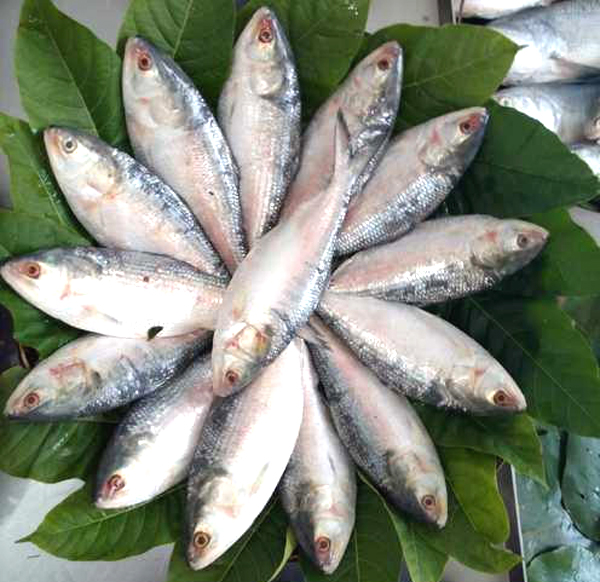
Special Notes
The Hilsa fish is a very important fish species in its native area. It is commercially very important is some south Asian countries. It is highly valued in Bangladesh and India (especially in West Bengal, Andhra Pradesh and Tamil Nadu). It is a very popular fish amongst the people of South Asia and Middle East, but especially with Bengalis and Odias. It is highly popular mainly because of it’s flavor and taste. The fish is also exported globally.
The Hilsa is actually an oily fish, and is rich in Omega 3 fatty acids. It is generally marketed fresh, frozen, smoked and salted. A dish named ‘Sorse Illish‘, prepared with mustard seed paste is very popular amongst the Bengalis. It is said that people can cook the fish in more than 50 ways. However, review full breed profile of this fish in the table below.
| Name | Hilsa |
| Kingdom | Animalia |
| Phylum | Chordata |
| Class | Actinopterygii |
| Order | Clupeiformes |
| Family | Clupeidae |
| Genus | Tenualosa |
| Species | T. ilisha |
| Binomial Name/Scientific Name | Tenualosa ilisha |
| Other Names | Also known as Ilish, Hilsa herring, Hilsa Shad, Ellis, Modar, Palva, Pallo Machhi, Sboor, Terubuk etc |
| Breed Purpose | Mainly food |
| Weight | Can reach up to 3 kg |
| Special Notes | Economically very important fish species of Bangladesh, India and some other south Asian countries, highly valued in India, Bangladesh and also in international market, especially very popular amongst the Bengalis, highly valued for it’s flavor and taste, exported globally, rich in Omega 3 fatty acids, marketed fresh, frozen, smoked and salted |
| Breeding Method | Natural |
| Climate Tolerance | Native climates |
| Body Color | Bright silver |
| Rarity | Common |
| Availability | Asia |
Frequently asked questions
People often ask many questions regarding this fish. Here we are trying to list the most common and notable frequently asked questions about hilsa fish and trying to answer them.
Is hilsa fish healthy?
Yes, hilsa is a healthy fish. It is highly nutritious and a good source of omega-3 fatty acids. It is a good source of high quality protein and the fish is beneficial for heart health. Hilsa is also a good source of some important vitamins and minerals. Although, you should consume the fish in moderation.
Can I eat hilsa fish during pregnancy?
Yes, you can eat hilsa during pregnancy. It is a good source of some essential vitamins and minerals which are considered good for pregnant women. Although, you should consume in moderation and cook the fish properly before eating.
Does hilsa fish have bones?
Yes, the hilsa fish has bones. Actually, this fish has unique bone structure, with a central spine and smaller bones throughout. Be cautious when eating the fish to avoid any discomfort from the bones.
Does hilsa fish have mercury?
Yes, like many other fish, hilsa can also contain some levels of mercury. But the fish generally has lower levels of mercury as compared to larger fish species.
Does hilsa fish have omega 3?
Yes, hilsa is a good source of omega-3 fatty acids.
How to cook hilsa fish?
You can cook this fish in many different ways. And there are many different traditional recipes available to try. Some most common and popular cooking ways are sorshe ilish, frying, baking, curry etc.
How to debone hilsa fish?
Deboning hilsa fish can be pretty difficult for you due to its unique bone structure. You should be very careful while eating this fish.
Is hilsa fish good for cholesterol?
Yes, consuming hilsa fish can be good for controlling cholesterol levels. It is rich in omega-3 fatty acids, and this nutrient is known to help reduce bad cholesterol and increase good cholesterol.
What does hilsa fish eat?
Diet of hilsa fish primarily consist of plankton, small crustaceans, and aquatic insects.
Why hilsa fish is so costly?
Hilsa fish is very costly mainly because of its taste, seasonal availability and cultural significance.

